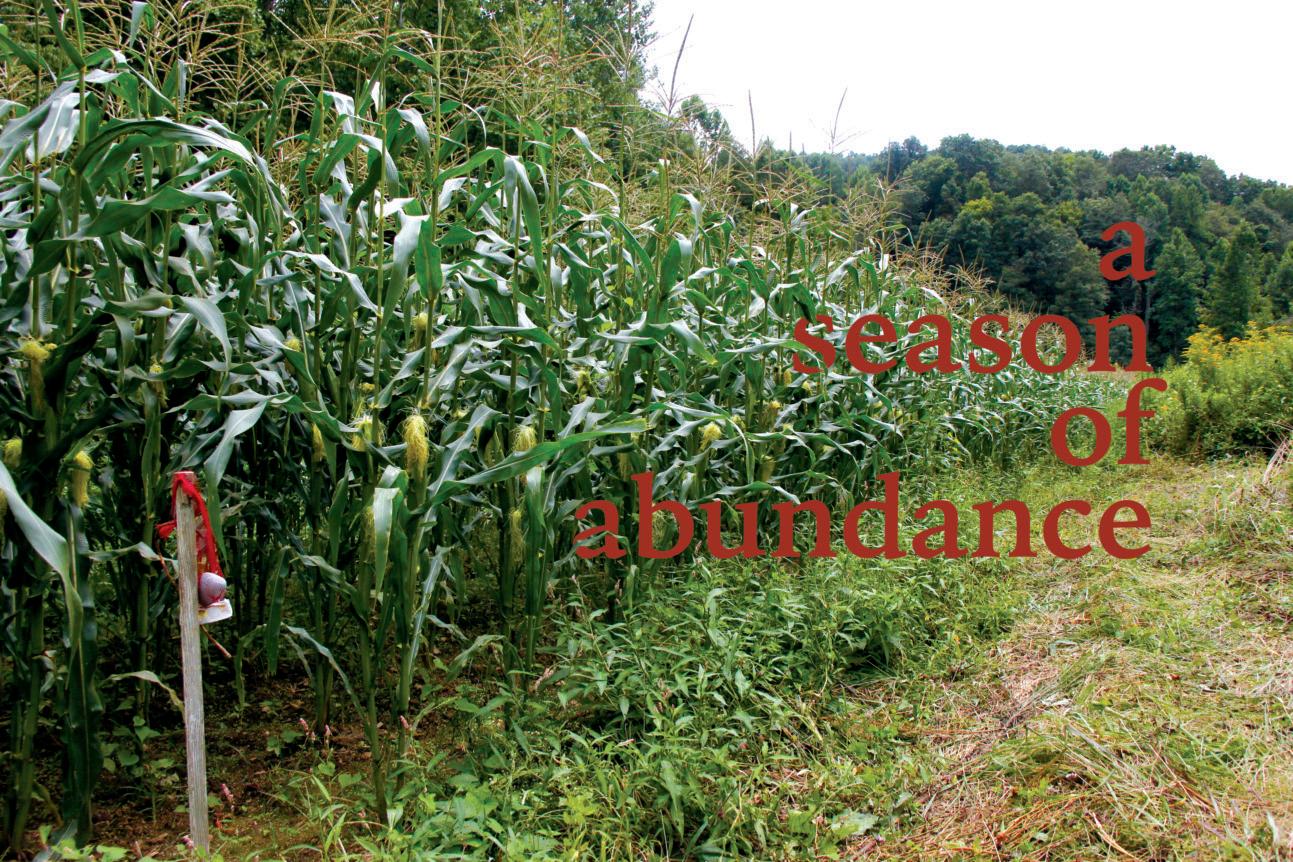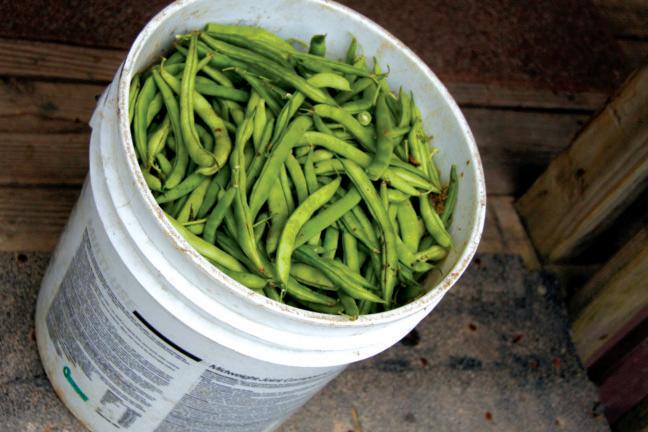
4 minute read
A Season of Abundance
“This keeps me going. It’s what I look forward to and enjoy every year,” muses Fern Coffey, making the short trek from her front porch to her gardens. The landscape is lush and well-tended, but with rough edges and flourishes of the wild on every side. Just past a small gully of barely-moving water, those rough edges become more prominent and a cacophony of chirps and buzzes builds with each step. Turning the corner around a large patch of weeds and overgrowth, another world is revealed. “You can tell that this is where the beans used to be – we’ve pretty much worn them out at this point!”
Coffey participates in CAP’s annual Garden Seed Program – she is currently between harvests and hopeful about the potential yield of the remaining items. Coffey continues, “ There’s corn, there’s broccoli, and there are rows of peppers and zucchini. Up in the garden at the top of the hill I planted cucumber. My tomato patches are up yonder and boy – there’s some goodies in there!”
There are at least five full garden beds spread around Coffey’s property, emerging at any point where the land is at enough to accommodate their cultivation. She has already exhausted the yield of the beans she planted months earlier and the tomatoes appear to be nearing the end of their season. There was some issue of deer interloping into her cucumber patch, so the verdict is still out on that crop, but overall this has been a season of abundance for Coffey thus far.
The seed program is a relatively small, but unique component of CAP’s Family Advocacy Program. Liz Phelps, one of the program’s managers, explains, “Our work is in connecting people with resources, whatever avenue that might be. So when the season arrives and people are needing garden seeds, we just want to make sure they get the things they need so that they can grow a garden and feed their families.”
“You’ve got to learn to outsmart the varmints,” Coffey grumbles while carefully stepping around the gargantuan tomatoes that dot her garden. She’s been vigilant this year to ward off the native wildlife – the raccoons have been particularly appreciative of her hard work – going so far as to set live traps, spread various natural substances around the perimeters, and hang bars of Ivory Spring soap from stakes every few feet (someone had offered this as an unorthodox solution to her animal problem). These attempts have produced mixed results, but luckily her garden has been bountiful enough to feed herself and her family, her neighbors, others in the community, and yes, even some of those ravenous local critters.
“We canned some, we dried some, we sold some, and we gave plenty away,” Coffey says of her bean crops. She, like many of the participants of the seed program, passes along the fruits of her labors to neighbors.
Phelps explains, “We hope they kind of pass it along if they’ve got extra – pass it along to neighbors or bring it by a food bank, or just do something to extend the blessing. It really gives them the opportunity and ability to help their neighbors.”
If participants of the seed program have additional needs, CAP works to connect them with the resources to meet their requests. Because of the generous gifts of donors, the Family Advocacy Program is often able to provide fertilizer, additional canning jars, and specific seeds and plants. CAP also partners with other community organizations, like local Future Farmers of America (FFA) chapters and county extension offices, to connect participants with educational resources to assist in their horticultural endeavors.
“This program has its little niche, if you will, and it has connected with people and that’s really what it’s all about – connecting people to one another within their community and extending those connections beyond that community,” explains Phelps. “It gives us a chance to go out and visit families that we normally don’t get to visit, because they aren’t necessarily coming to us for emergency assistance or other immediate needs. And when we go out and discover that they’ve got a unique gardening style or they’re doing all raised beds versus plowing a big garden – it’s another way to connect at a human level.”
Coffey’s corn is something to behold. Rows and rows of corn stalks extending high into the Appalachian sky. e corn is not quite ready to harvest, but it’s very close, and Coffey has been checking often. Having planted and tended these gardens for years now, she embraces the challenge to exceed the previous year’s bounty. “You learn every year,” she says. “You sure do. It’s always hit or miss, but you learn and you try new things and hope for the best. But I just love staying at this.”
Taking a moment to survey her garden one last time before journeying back to her porch, she quietly relishes, “Oh, my pretty corn. I’m proud of that.”











